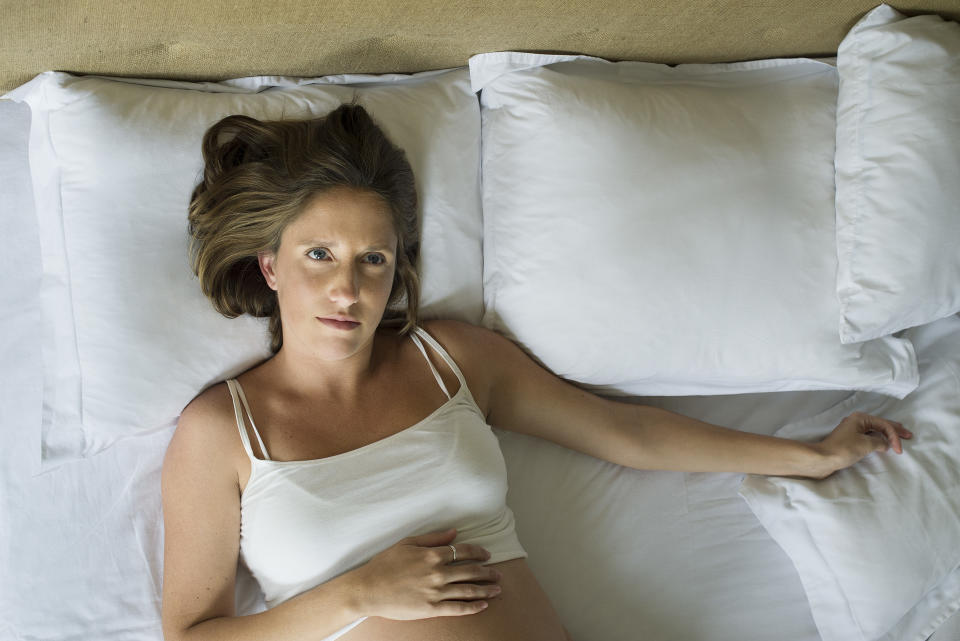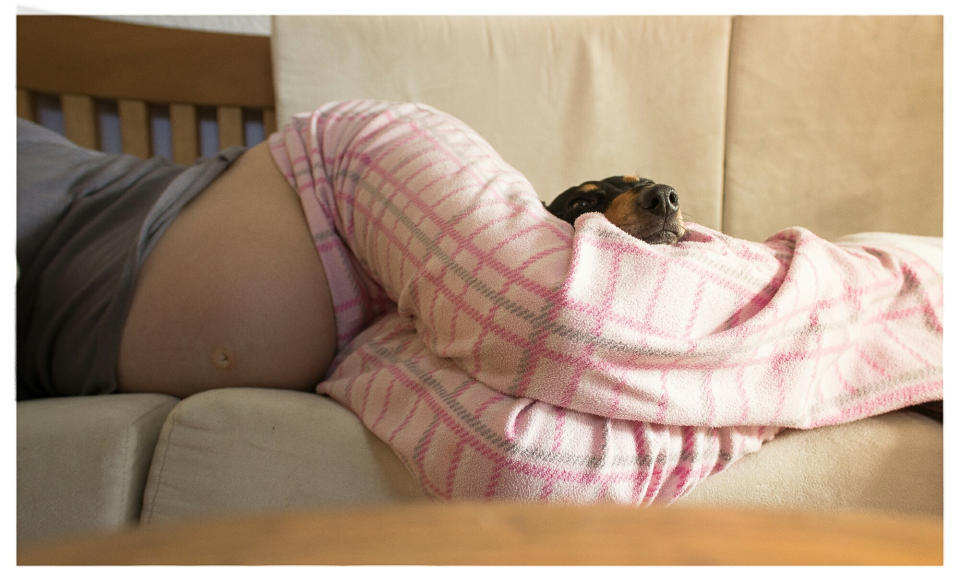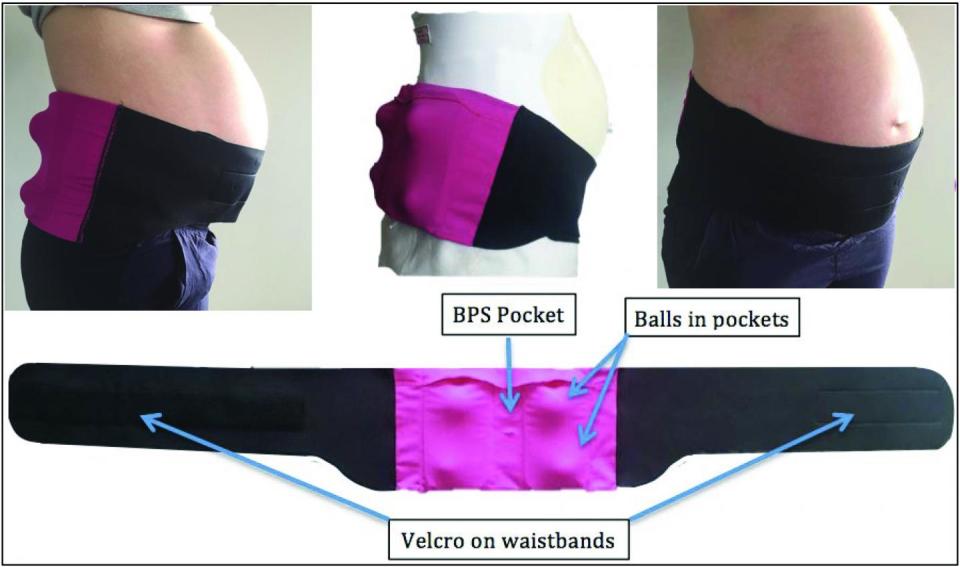The new revelation on how to sleep during pregnancy
Getting a decent night sleep when you’re pregnant is most often a mission in itself but it seems a new revelation could be about to change all that.
Gone are the days of sleeping on your back (a.k.a in the supine position) without a care in the world because when you’re pregnant that is a big no-no.

Rather, it’s best to avoid sleeping on your back during pregnancy so that you’re not reducing the blood flow to the placenta and ultimately the baby – which if done during the third trimester comes with the increased the risk of stillbirth.
Not only that, but this is also a very taxing position for your lower back considering the extra weight it has to support.
Despite this, rolling onto your back is a hard thing to avoid while in a sleeping subconscious state, which is why recent studies have been looking at intervention methods to stop this from happening.
And one study has come up with the revelation that wearing a waistband style sleeping device can significantly reduce the time expecting mothers spend sleeping on their back – which is currently about 25 percent of total sleep time.

The test looked at the maternal heart rate, blood oxygen saturation and sleep and breathing parameters for 25 healthy pregnant women between 23 and 38 weeks of gestation.
“Our findings suggest that women can comfortably sleep wearing a device around their waist that effectively stops them from sleeping on their back,” according to principal investigator Jane Warland from Adelaide.
“Wearing a device that minimizes back sleep, and which is comfortable and doesn’t impact the mother’s sleep length or quality, may be a simple way to reduce stillbirth incidence, especially if the mother is at increased risk due to other factors,” Jane further said of the study recorded in the Journal of Clinical Sleep Medicine.

The PrenaBelt, used for this study, works off the principles of positional therapy to reduce supine sleep with the use of balls that sit tucked into the back to the belt preventing people from rolling onto them in their sleep.
And the results were impressive with the time spent sleeping supine reduced from 48.3 minutes during the control night to 28.5 minutes during the intervention night.
Researchers are now looking at doing further studies to support their findings.
Got a story tip? Send it to tips@yahoo7.com.au
Want more celebrity, entertainment and lifestyle news? Follow Be on Facebook, Twitter, Pinterest, Tumblr and Instagram.

 Yahoo Lifestyle
Yahoo Lifestyle 

